Between art and scenography: Canaletto, a “postcard” painter
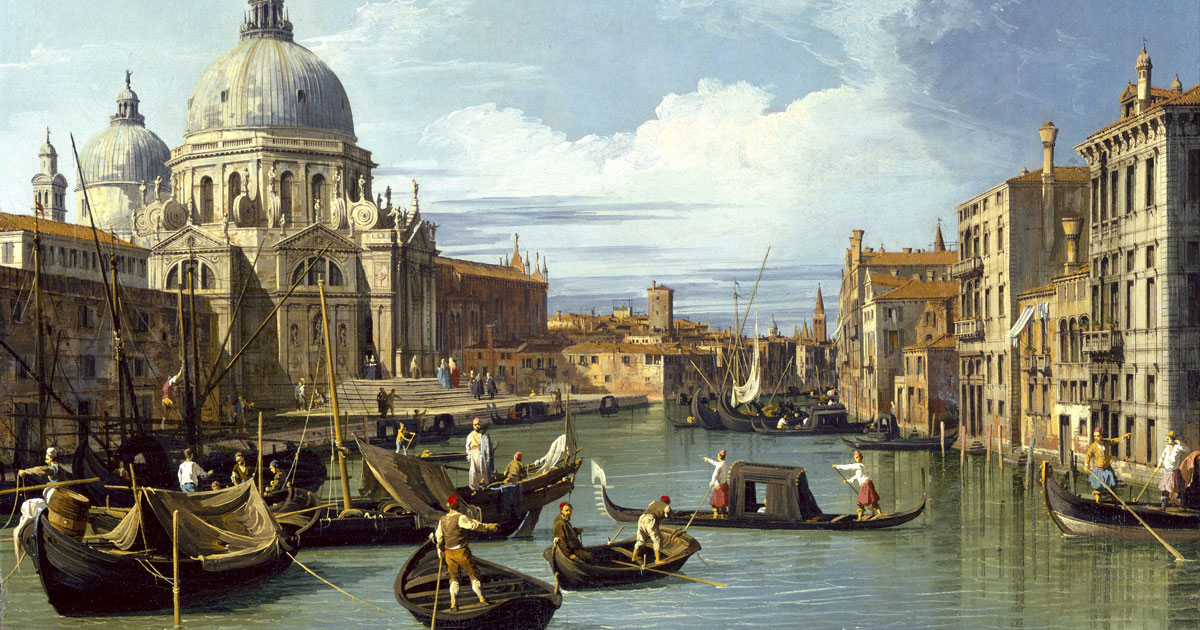
A question of views
Giovanni Antonio Canal, known as Canaletto, conquered the world with his views of Venice.
His works, which resemble photographs, are also a point of reference in the history of art.
How did he come to paint views? How did he create his works?
Let’s discover together the secrets of Canaletto’s views!
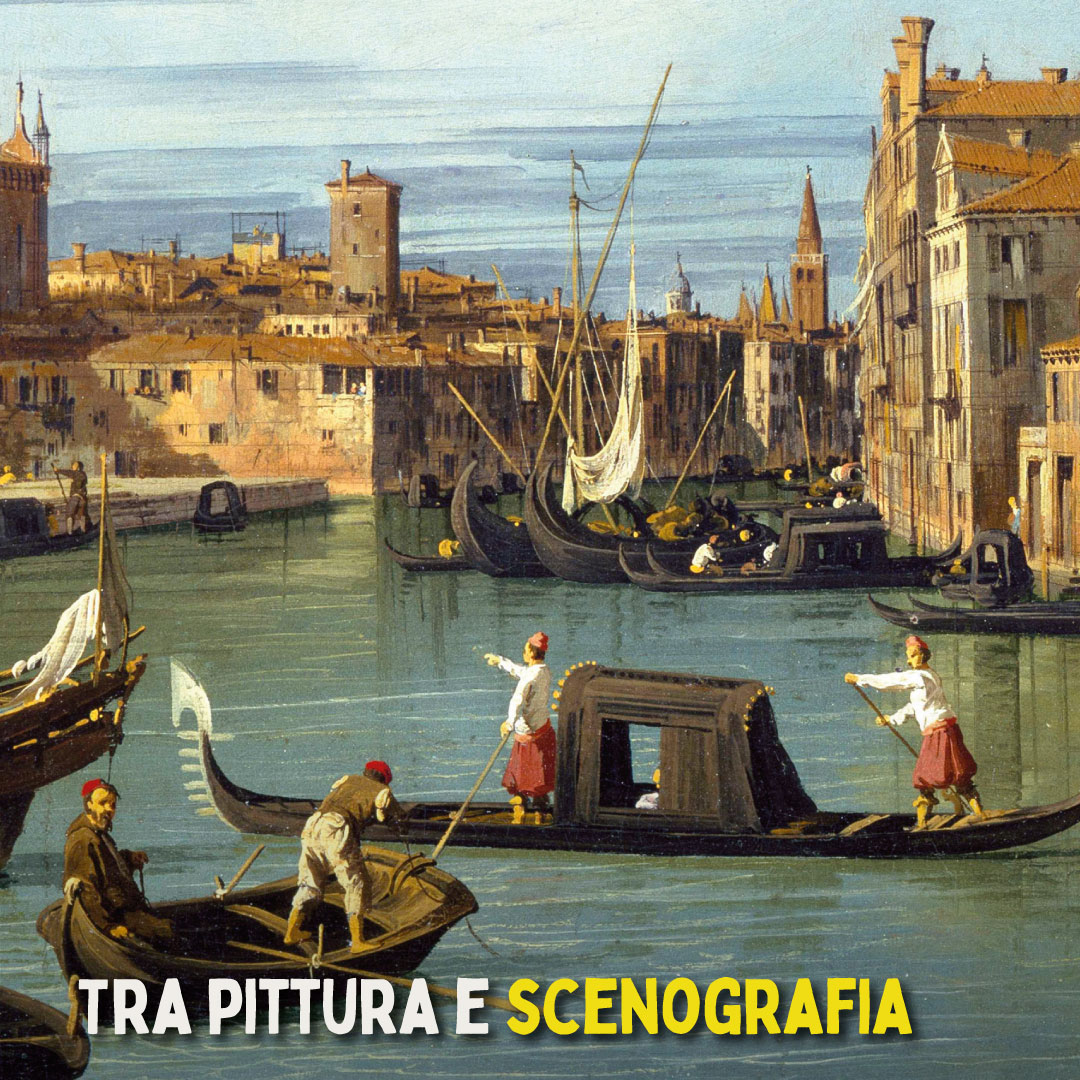
Scenography, a family tradition
If you think Canaletto’s views are scenic and theatrical, you’d be right.
In fact, Canaletto was the son of a scenographer, and he and his brother were taught by their father how to paint theatrical scenery.
It was only after a stay in Rome, where he met a group of painters known as “vedutisti”, that he began to paint views.
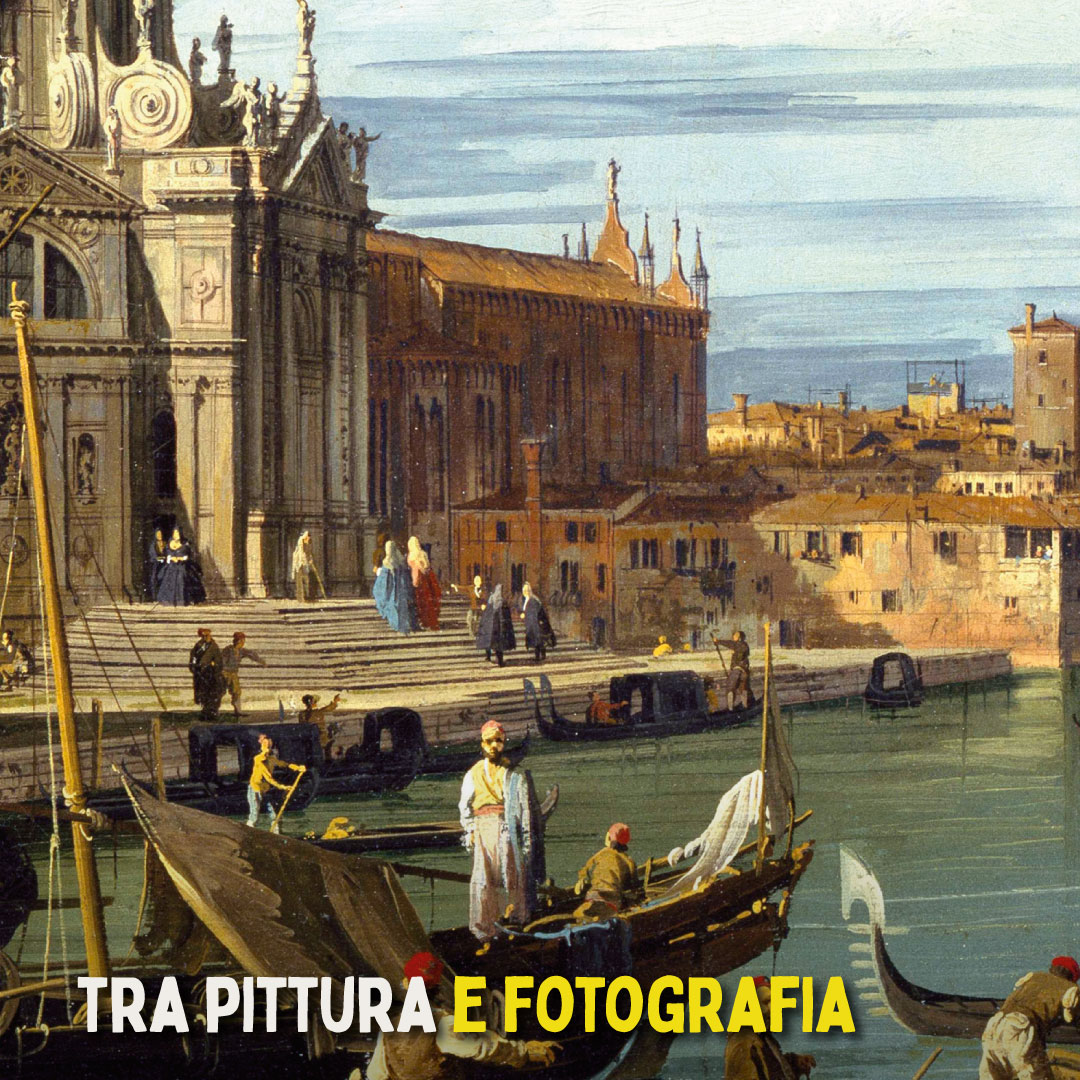
Canaletto and the secrets of the camera obscura
Canaletto is famous for his views of life in the canals of Venice.
His paintings are reminiscent of photographs, and this is no coincidence: to create them, he used a camera obscura, a sort of ancestor of the camera.
A dark box with a system of lenses and mirrors that allowed the views of Venice to be projected onto a sheet of paper and traced.
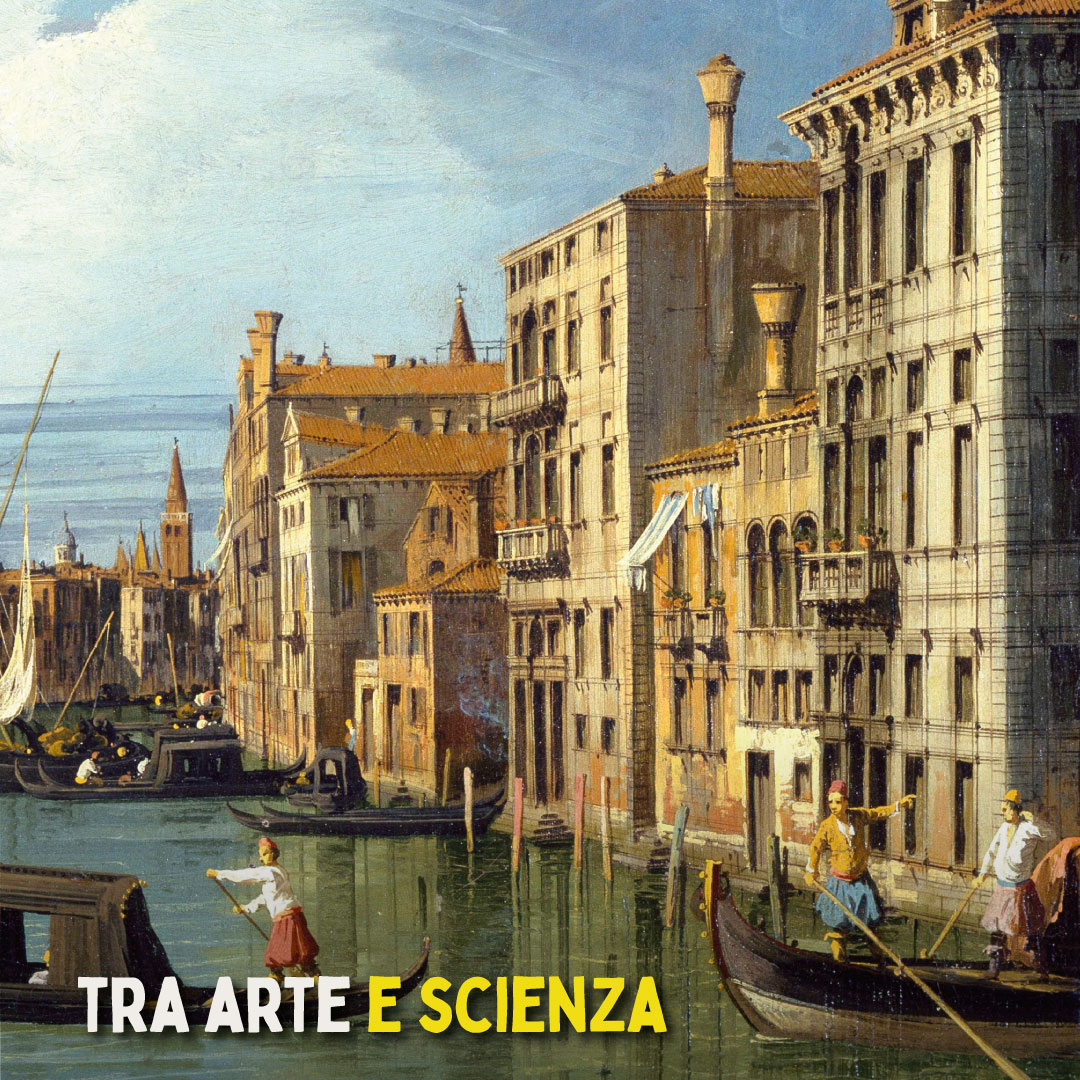
A “scientific” postcard to study the flood in Venice
We are used to thinking of art as a powerful aesthetic and emotional medium, but Canaletto’s works were also useful to science.
In fact, scientists studying the phenomenon of flooding in Venice have found in his paintings a source capable of documenting the changes in water levels over the centuries, analyzing the reproductions of the buildings in great detail.
Among the most interesting elements for scholars are certainly the algae painted at the base of the buildings!
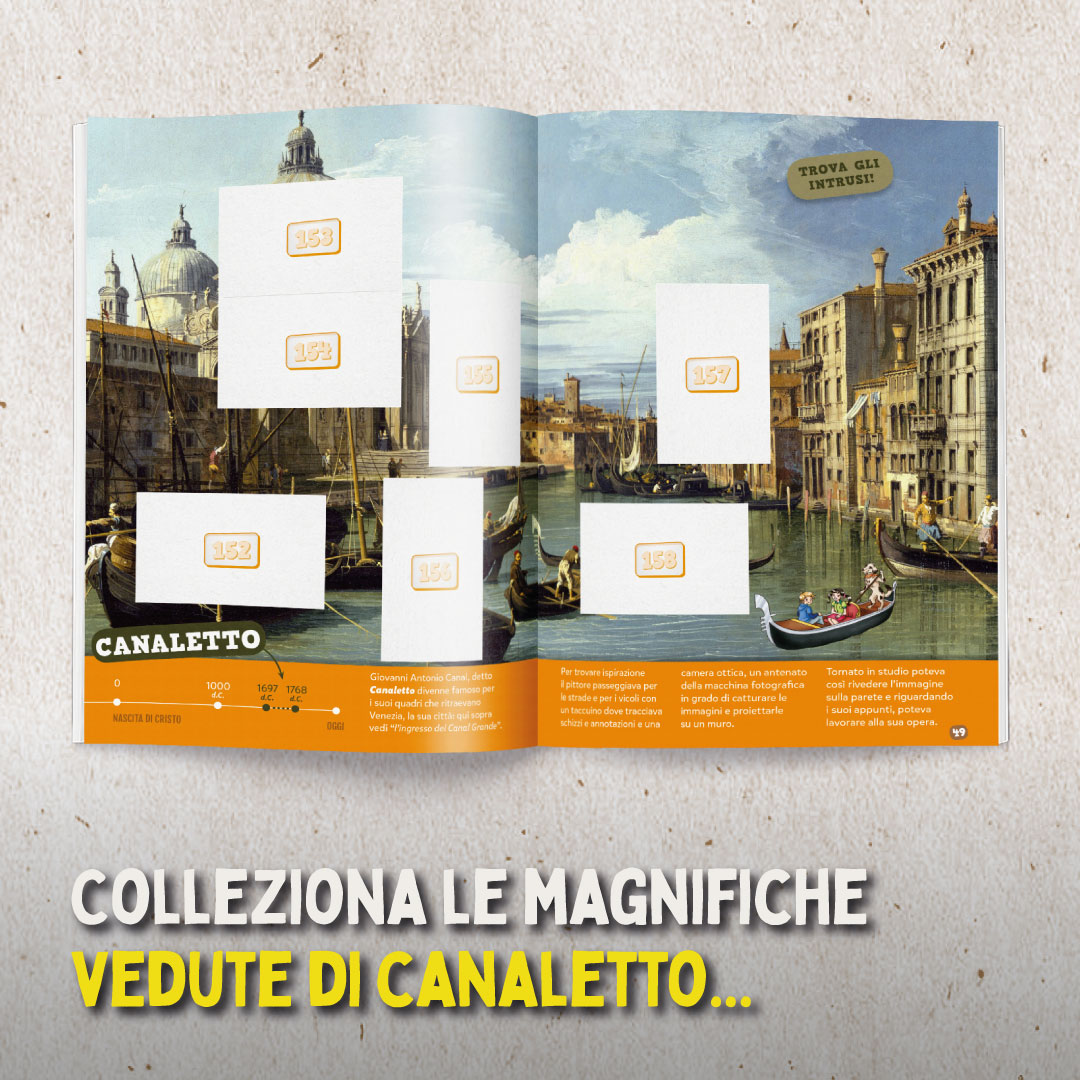
With the ‘From Prehistory to Gauguin’ Artonauti Album
A journey to discover some of the greatest masterpieces created in different eras, from prehistory to the end of the 19th century.